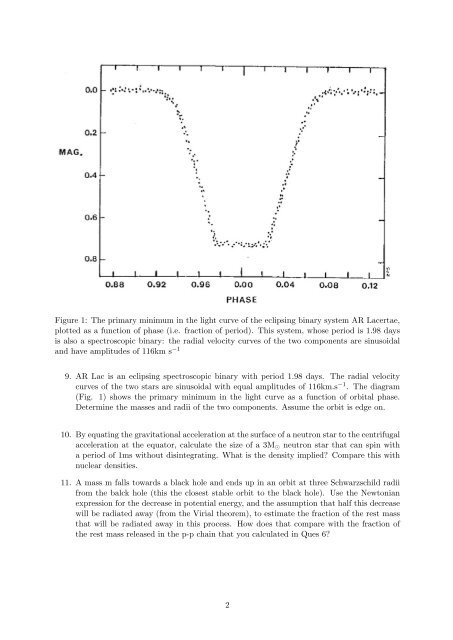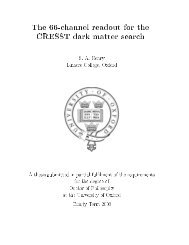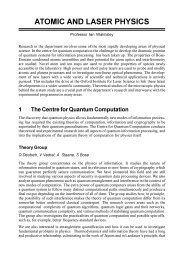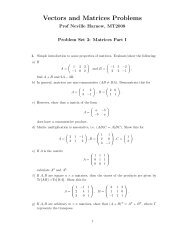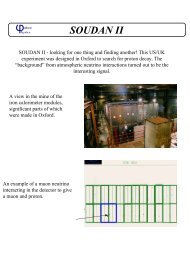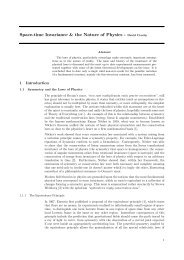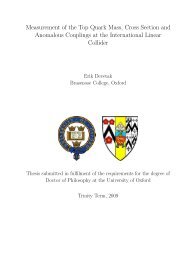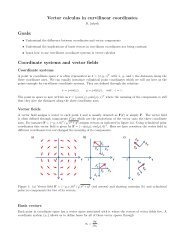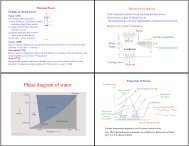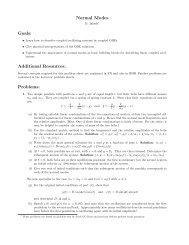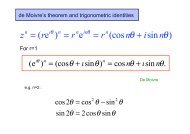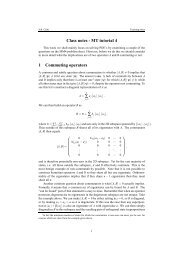S2: Astrophysics: From Planets to The Cosmos Trinity term 2012
S2: Astrophysics: From Planets to The Cosmos Trinity term 2012
S2: Astrophysics: From Planets to The Cosmos Trinity term 2012
You also want an ePaper? Increase the reach of your titles
YUMPU automatically turns print PDFs into web optimized ePapers that Google loves.
Figure 1: <strong>The</strong> primary minimum in the light curve of the eclipsing binary system AR Lacertae,<br />
plotted as a function of phase (i.e. fraction of period). This system, whose period is 1.98 days<br />
is also a spectroscopic binary: the radial velocity curves of the two components are sinusoidal<br />
and have amplitudes of 116km s −1<br />
9. AR Lac is an eclipsing spectroscopic binary with period 1.98 days. <strong>The</strong> radial velocity<br />
curves of the two stars are sinusoidal with equal amplitudes of 116km.s −1 . <strong>The</strong> diagram<br />
(Fig. 1) shows the primary minimum in the light curve as a function of orbital phase.<br />
De<strong>term</strong>ine the masses and radii of the two components. Assume the orbit is edge on.<br />
10. By equating the gravitational acceleration at the surface of a neutron star <strong>to</strong> the centrifugal<br />
acceleration at the equa<strong>to</strong>r, calculate the size of a 3M ⊙ neutron star that can spin with<br />
a period of 1ms without disintegrating. What is the density implied? Compare this with<br />
nuclear densities.<br />
11. A mass m falls <strong>to</strong>wards a black hole and ends up in an orbit at three Schwarzschild radii<br />
from the balck hole (this the closest stable orbit <strong>to</strong> the black hole). Use the New<strong>to</strong>nian<br />
expression for the decrease in potential energy, and the assumption that half this decrease<br />
will be radiated away (from the Virial theorem), <strong>to</strong> estimate the fraction of the rest mass<br />
that will be radiated away in this process. How does that compare with the fraction of<br />
the rest mass released in the p-p chain that you calculated in Ques 6?<br />
2


